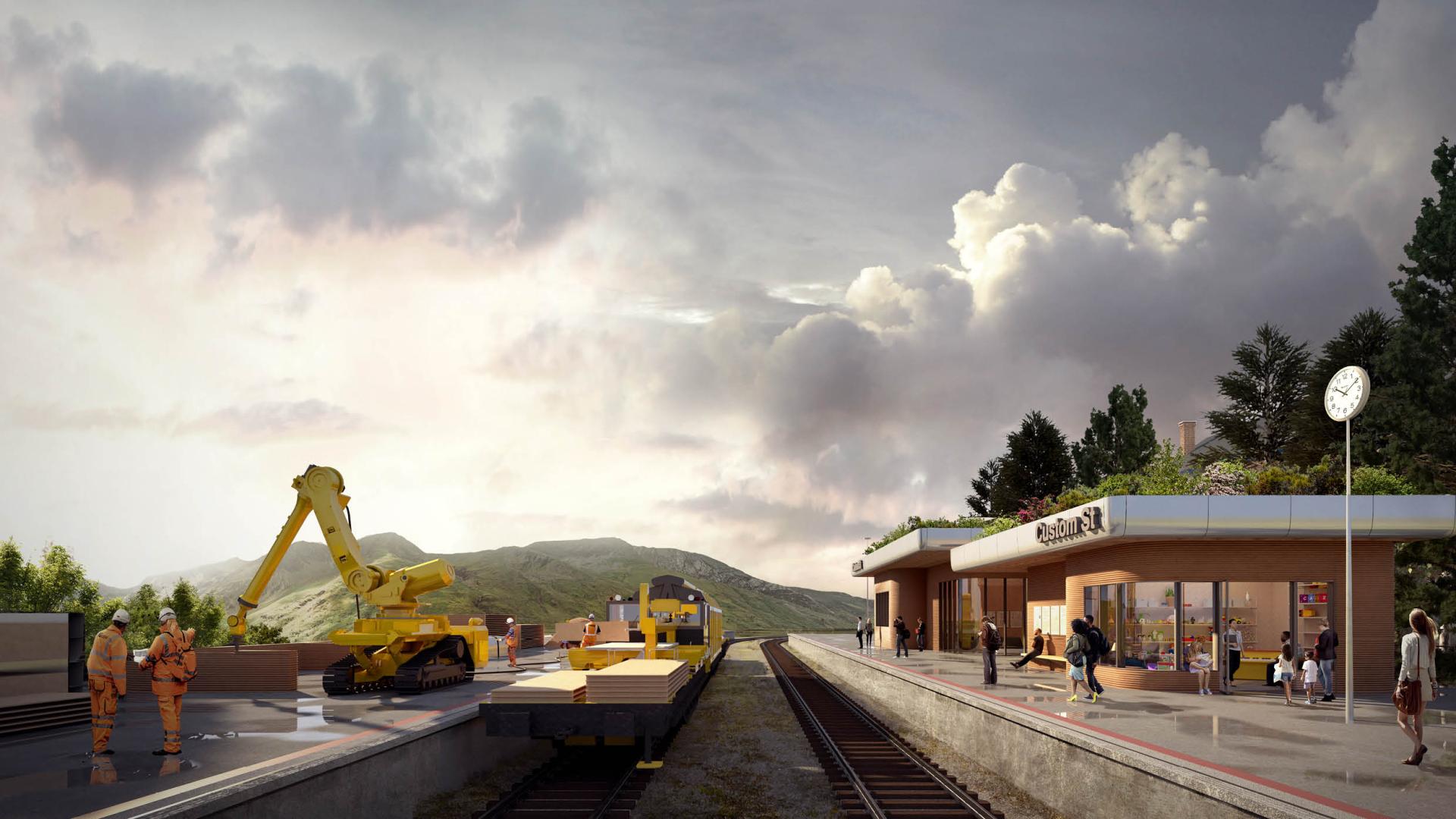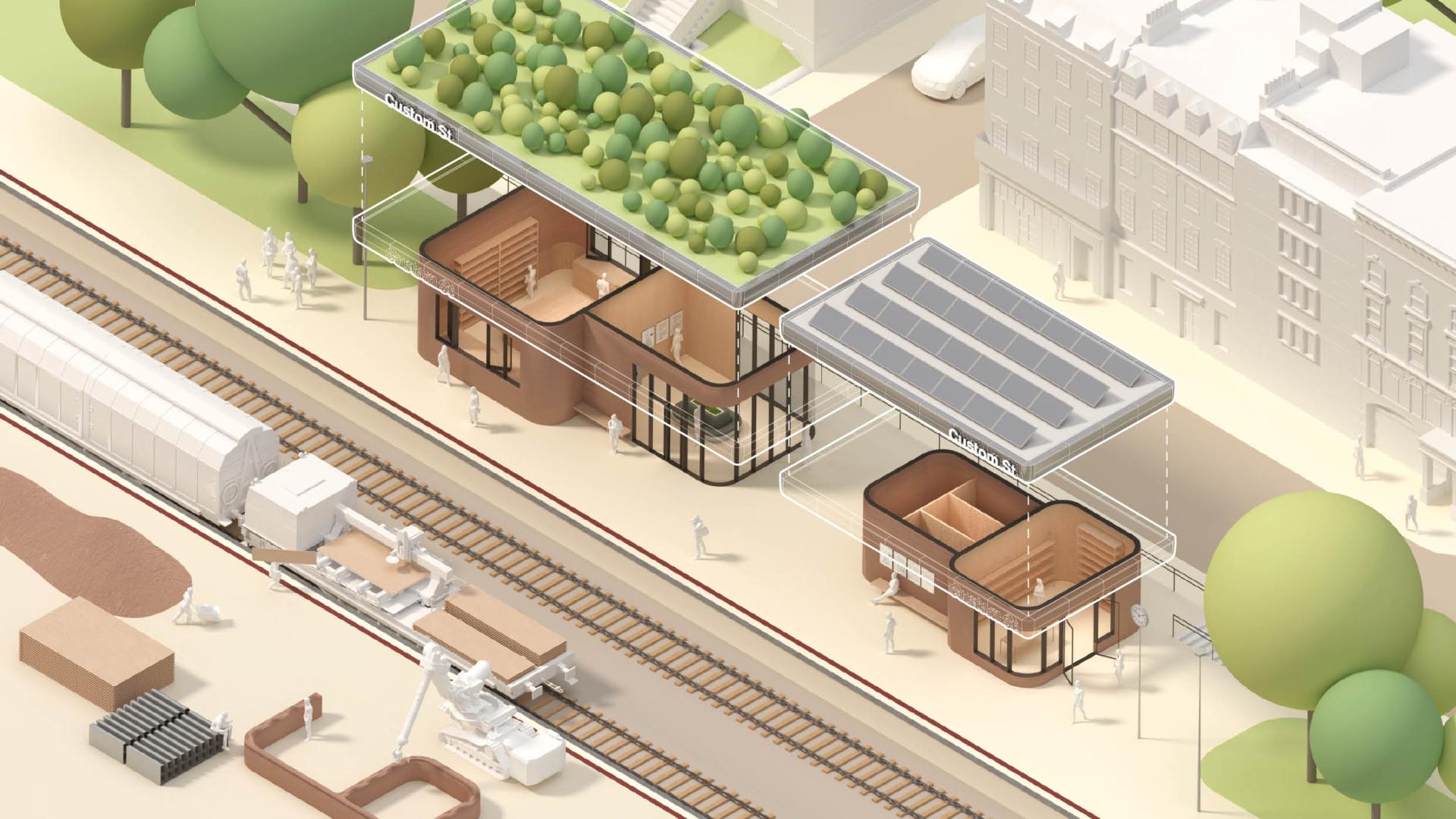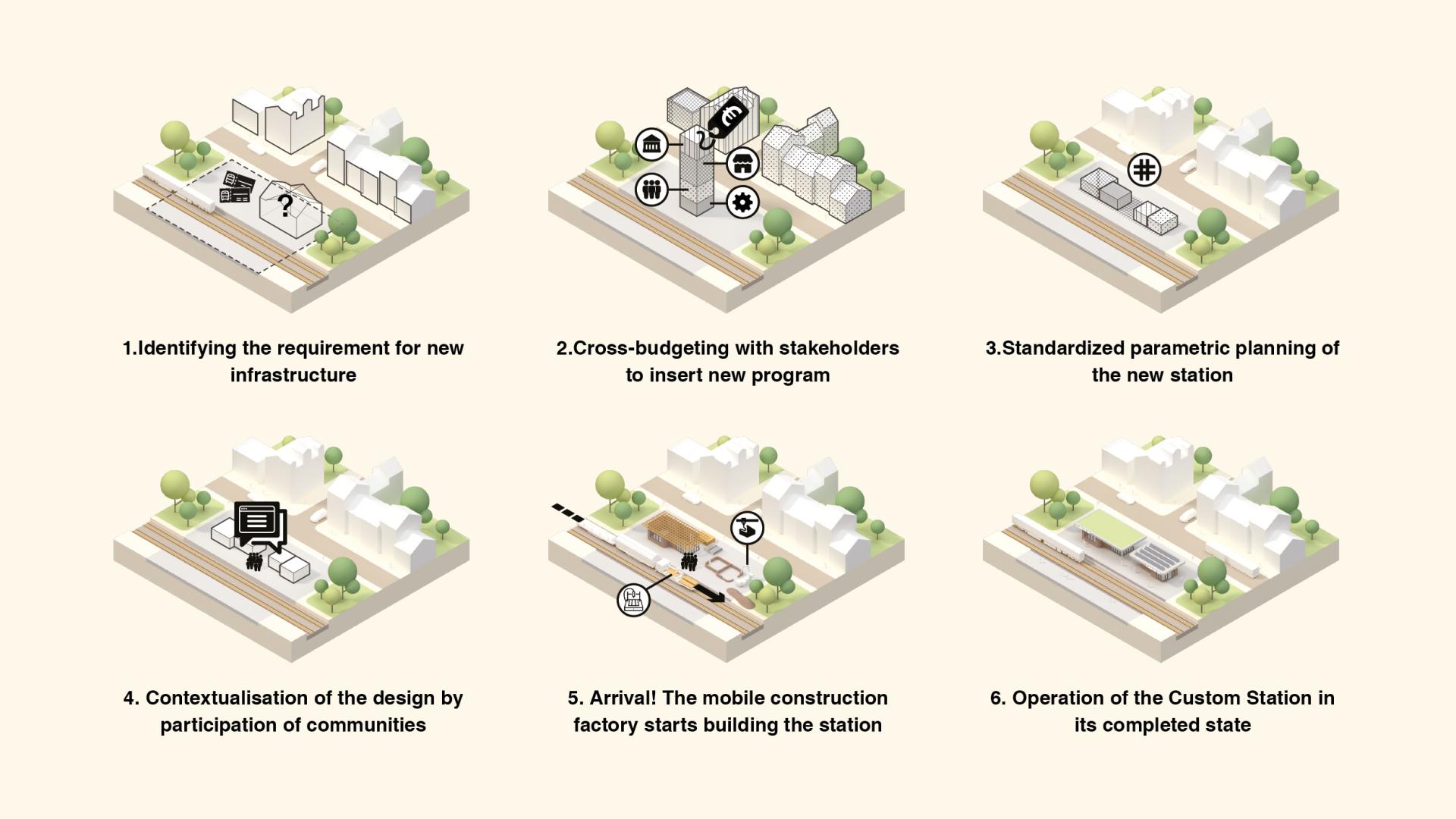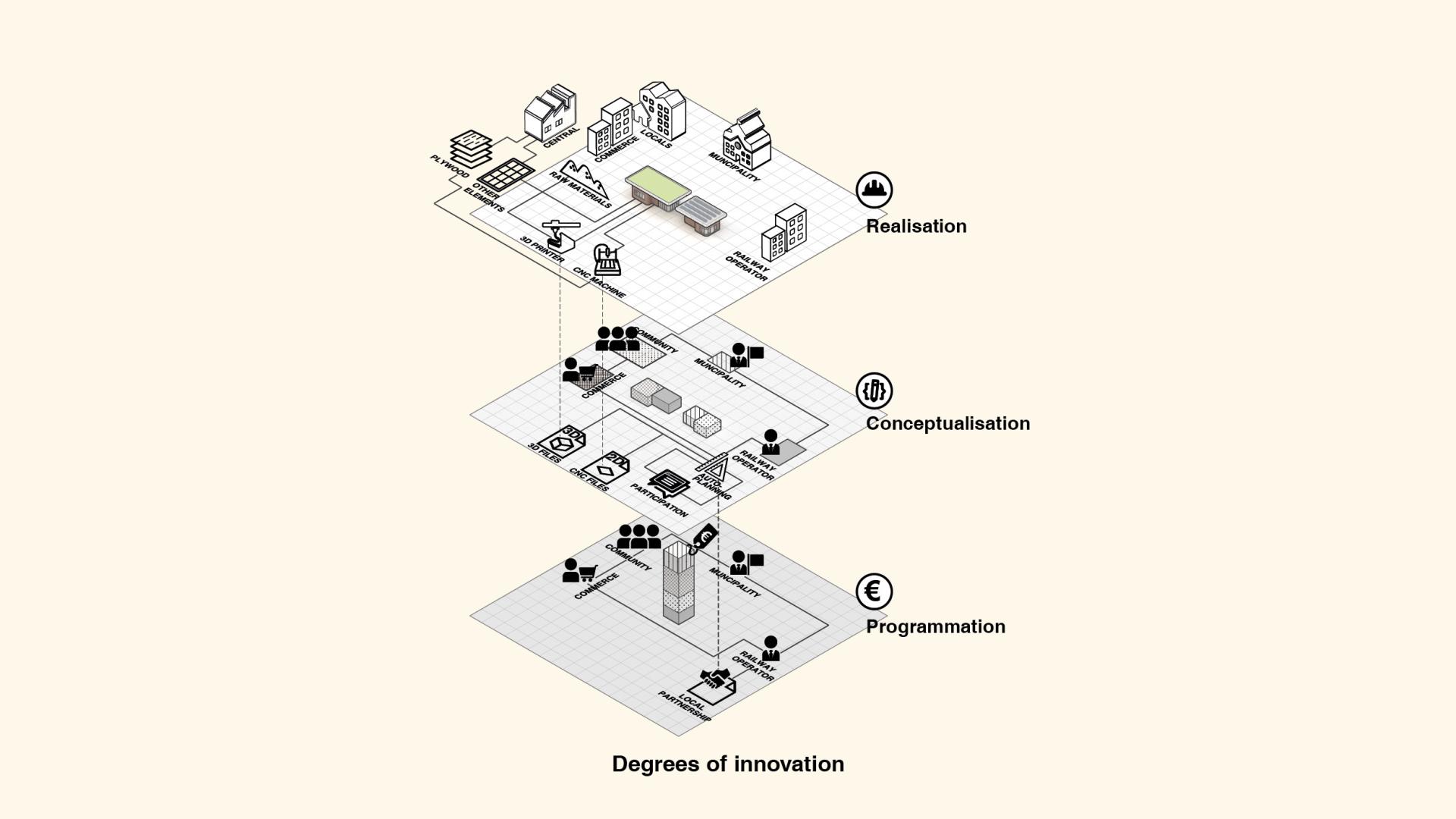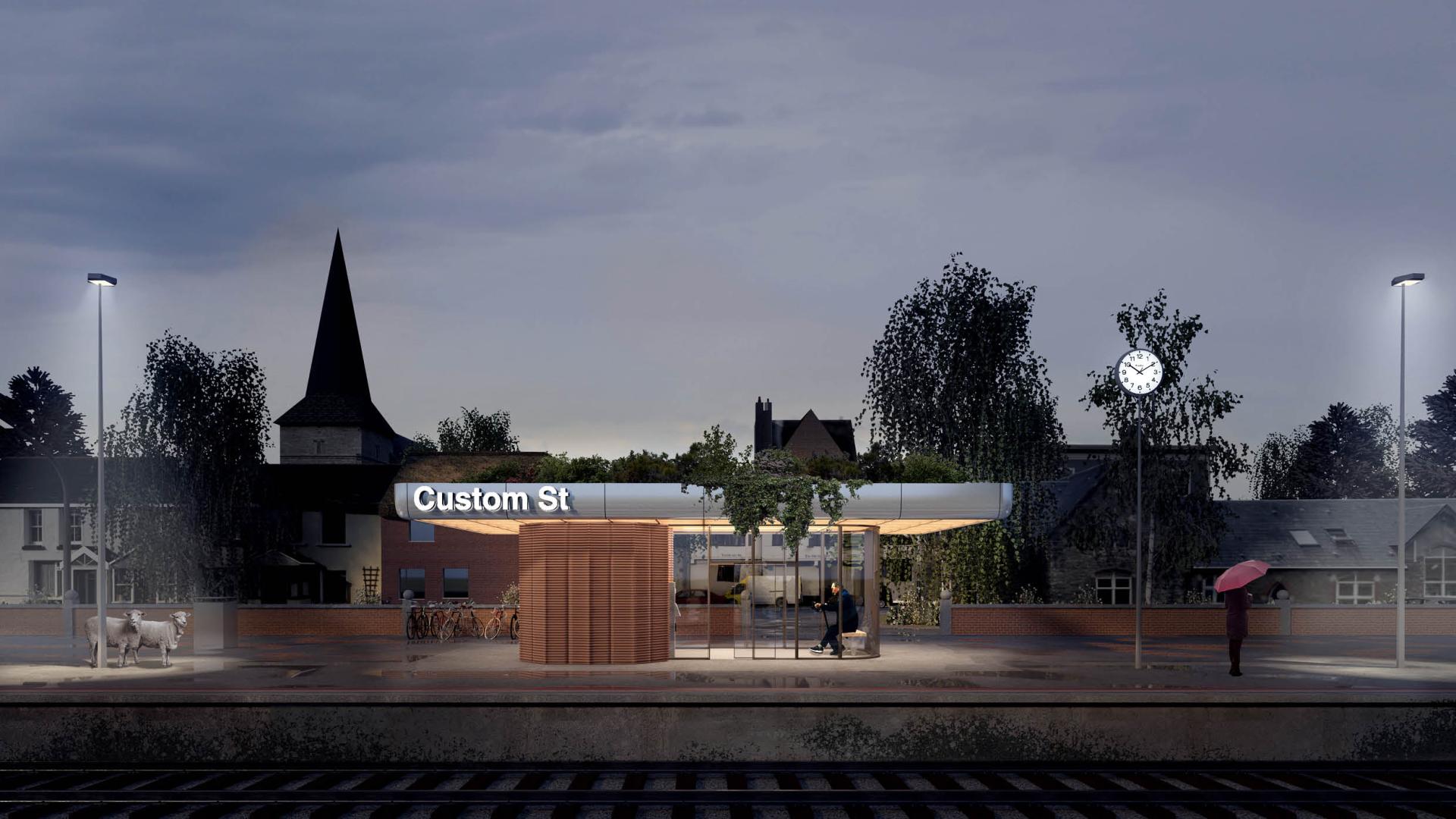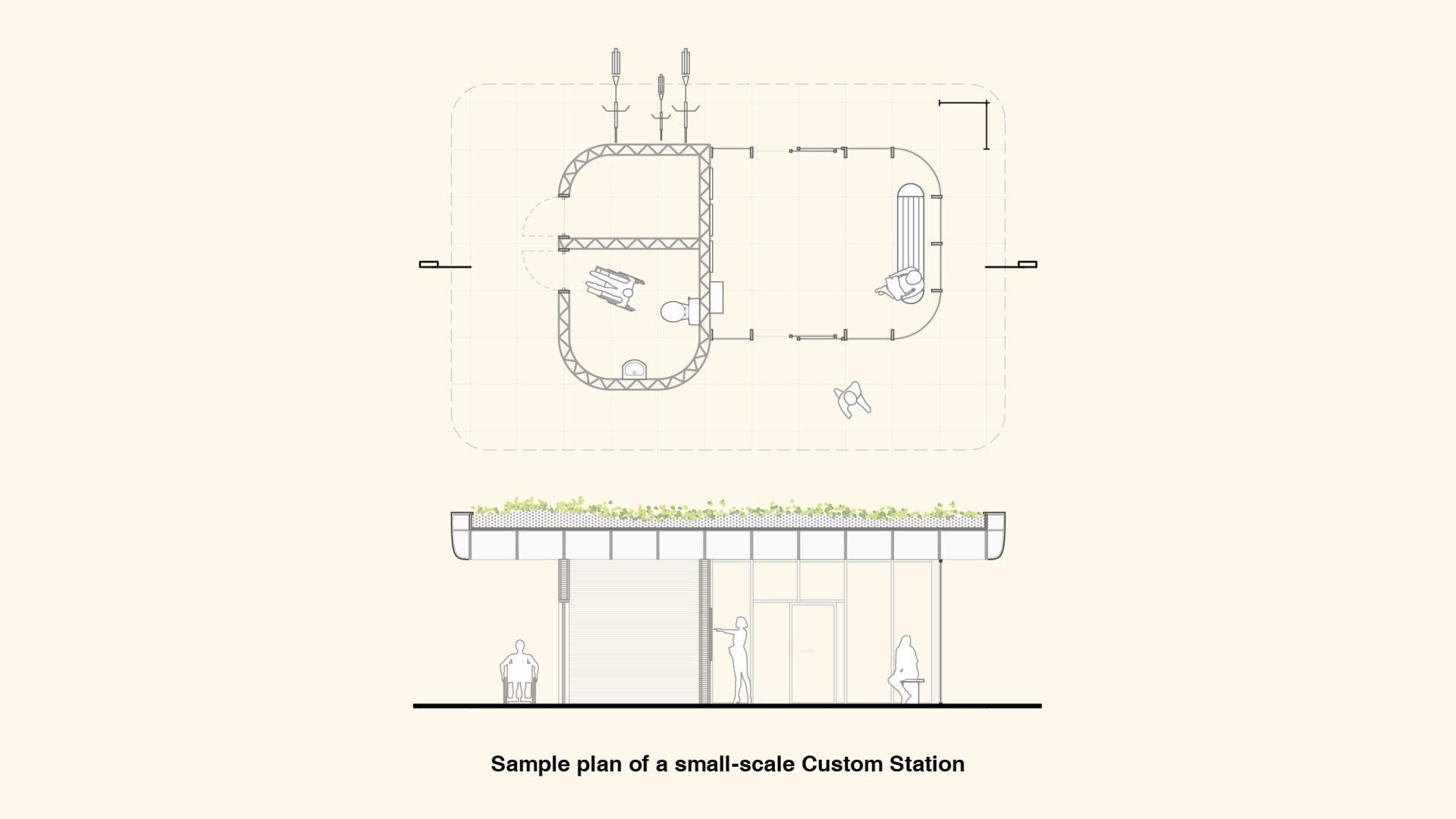Custom Station
Basic information
Project Title
Full project title
Category
Project Description
Custom Station proposes a new way of considering public infrastructure fabrication. Away from the narrow approach of centralized pre-fabrication leading to contextless architecture, we propose to convey the mobile tools of production by train where they are needed. The combination of parametric planning, systemized fabrication and craftmanship allows for a more sustainable and inclusive way to approach infrastructure as an extension of local material resources and collective sense of space.
Geographical Scope
Project Region
Urban or rural issues
Physical or other transformations
EU Programme or fund
Which funds
Description of the project
Summary
In the 20st century, infrastructure buildings and stations have been extensively conceived and built within the framework of prefabrication. Working as an economy of scale, relatively low construction cost is achieved by tendering high volumes of repetitive elements, rigid in terms of architectural particularization to local context and economy. Wherever you are the same building would appear, as plugged onto one’s landscape. Today, there is the opportunity to build better, more inclusive, more sustainable, more adapted. With the development of parametric tools and innovative construction methods, we can truly conceive the mobility hub of today and tomorrow.
Custom Station proposes to ensure the integration of small train stations by a financing system where additional stakeholders can take part in the planning process, which leads to lower construction and running costs. Local businesses, civic and social spaces complement the core services necessary for the functioning of the station. Local inhabitants and communities are invited to take part in the planning process, through a digital platform, they can create their own version of the station. They are actively impacting the creation of their very own environment. It becomes more than solely a transportation node, it is in sync with its surroundings as it is shaped by them.
The built matter is designed simply, with widely available construction materials. In this way, anywhere the station is being developed, materials can be tendered to local businesses, stimulating the local economy. Instead of shipping the materials across the country, only the necessary tools. A micro-factory on rails would be building, layer after layer, community’s visions of who they are. A station made-in “your place”, where the construction process is seen as a worthy activity. As a place that takes an active role in the development of your local economy. A place that also belongs to you.
Key objectives for sustainability
Custom Station is a sustainable evolution of the way we create railway infrastructure. It benefits from both the standardization of the construction processes and from the return to a highly localized fabrication.
The standardization of the construction processes includes the technologies and software behind the fabrication methods used. Additive manufacturing and CNC-cutting are highly efficient and precise methods of fabrication, eliminating waste and error. Constructive principles applied can be prototyped and optimized before the mobile construction plants replicate them on site. By transporting the tools, equipment, and staff exclusively on the rail network, a significant reduction of emissions is possible compared to transportation on roads.
Furthermore, localized construction can result in significantly reduced environmental impact, mostly due to the elimination of resource transportation. Conventionally, raw materials would be transported to central factories to be transformed, and the finished components would find its way onto the site, resulting in a lot of transportation loops and environmental impact. In Custom Station, the construction materials are made of a combination of local resources and widely available and standardized construction materials. Locally harvested wood, used for the CNC-processes, and locally extracted earth, providing the basis for additive manufacturing, provide the resources required for most of the construction. These materials are not only widely available, but also have a smaller carbon footprint in their processing than alternatives such as full concrete or steel construction. In this way, anywhere the station is being developed, materials can be tendered to local businesses, relying on smaller transportation loops.
Custom Station brings together the environmental benefits of both standardized and localized construction.
Key objectives for aesthetics and quality
Custom Station is, beyond a strategy for fabrication, about creating new infrastructure buildings that people can feel connected to. The aesthetic of each station is shaped by a balance between universal principles, for the good functionality of any train station, and unique features, from its place of insertion. The overall materialized intervention is a combination of three local forces: community participation, local bio-materiality, socio-economic landscape. Each station is then a representation of its social, natural, and economic contexts. An aesthetic manifestation of local sustainability.
The use of printed technology allows the exploration of infinite possibilities of patterns, inherent from the method of fabrication. Every station can reflect local history and memory of its place. The community participate into the shaping of the earth concrete printed layers, be it abstract geometric shapes, figurative representations, or organic patterns. While being very simple to technically integrate, it has the potential to make each station unique to its place and its community.
The printable material is based on earth concrete principles, where the earth is coming from the site of the station or the nearest possible location. There is an inherent beauty of representativity of the geological composition of the locality. The color and granulometry of the built object become an extension of the natural landscape it is grounded upon.
As every station integrates the possibility of participation into a shared civic asset, each station is seen as the visual representation of local development aspirations. Each station holds the potential to host different functionalities, instead of being a repetitive infrastructural object over the railway network. There is then the visual representation of how shared public assets embodies the values of togetherness and sensitivity to its place.
Key objectives for inclusion
The involvement of local stakeholders is a relevant aspect of creating new infrastructure which is not only connecting people, but also connected to people. This participation of a local community into the aesthetic articulation of their infrastructure is one part of how Custom Station aims to create a more inclusive generation of railway infrastructure.
Another contribution of the project towards this vision is the involvement of local stakeholders at an earlier stage of the project process, namely the spatial brief configuration for the structure to be built. In this phase, the scope of what a railway station should accommodate programmatically is defined, and the involvement of local communities, organization and businesses in this process can bring significant advantages to the integration of the structure into its place later on. If there is a local need for certain programs or facilities, the station in planning can eventually provide space for this demand. Not only will an early participation allow for a better integration of the new building, but it will also allow to localize and distribute the economics of a new train station. Instead of infilling the program commonly found in this typology, alternative program that is more suited to local needs can contribute to a socially more embedded infrastructure. Bringing together different public and private stakeholders to cross-finance the extended station/infrastructure buildings for additional program accommodation contributes to create buildings with increased impact on its surroundings and user. At the same time, the processes of construction as described previously can adapt to different functions within the structures without altering the principles of fabrication. Whether it is a café, a community space or a bookshop, the particular demands of these typologies can be easily integrated in the overall digital planning process and the construction process.
Physical or other transformations
Innovative character
Custom Station is a part of a much bigger conversation about the relationship between public institutions and citizens, between regional interests and local development, between affordable infrastructure construction and locally crafted fabrication. The project is an attempt to show that these aspects are not as separate as they may seem to be. Any relevant solution lies precisely at the intersection of these forces, fostering synergies across specialties and materialize alternative narratives for the built environment.
Aesthetics is derived from new processes of fabrication and its purpose of fostering a sense of ownership of its own environment. It is a resultant of its purpose of inclusivity and sustainability. This is the powerful evolution away from modernist principles into more systemic approach to the built environment. Not wondering what construction technologies can do for you, but what are the tools needed to fulfill the purpose of public infrastructure.
As a process-oriented approach, it is also showing that instead following the idiom “form follows function”, or more contemporary “form follows finance”, it is an attempt to show what “form follows needs” in socio-spatial and environmental scope, and at regional and local scales.
Custom Station is aiming to place at the center of conversations the role of public infrastructure in providing places where people can thrive and feel they have agency in its making.

